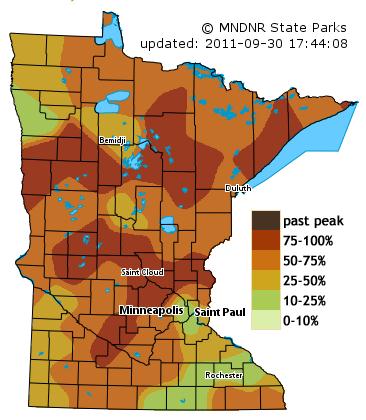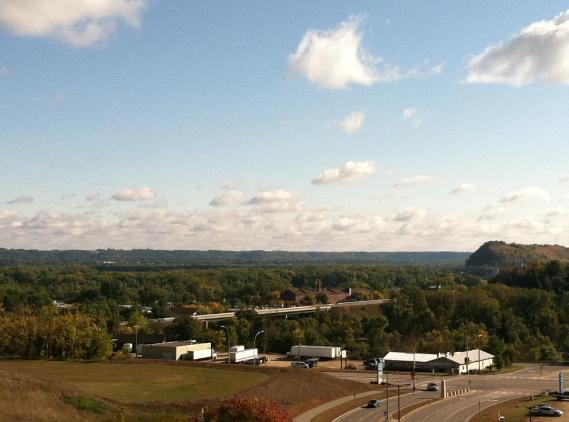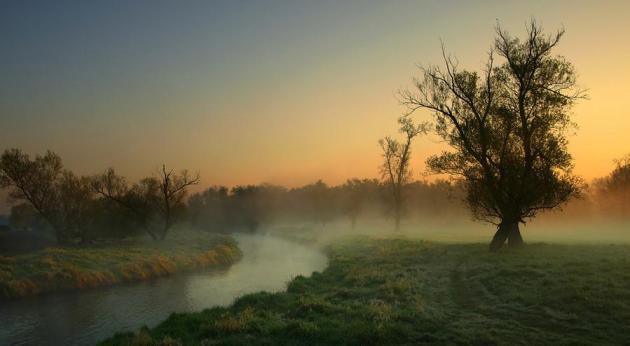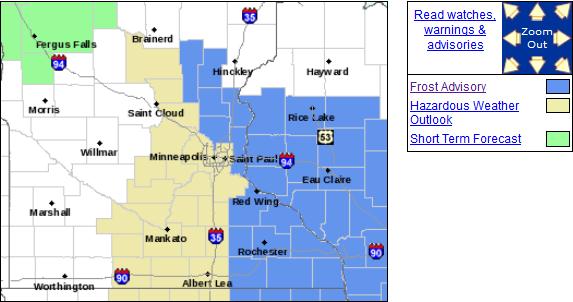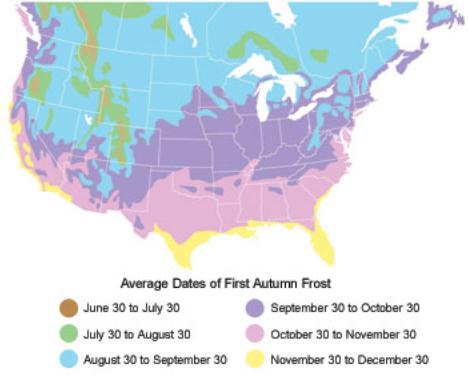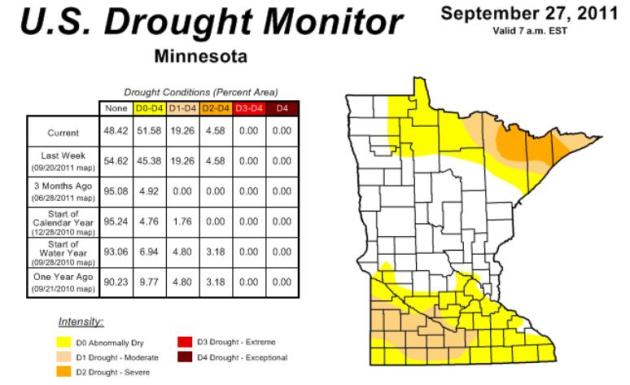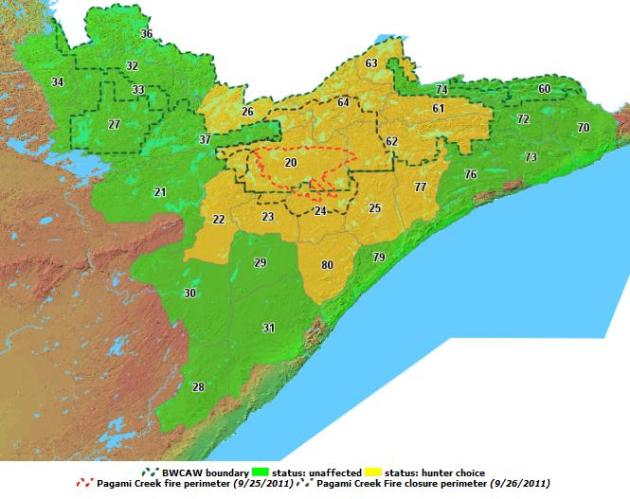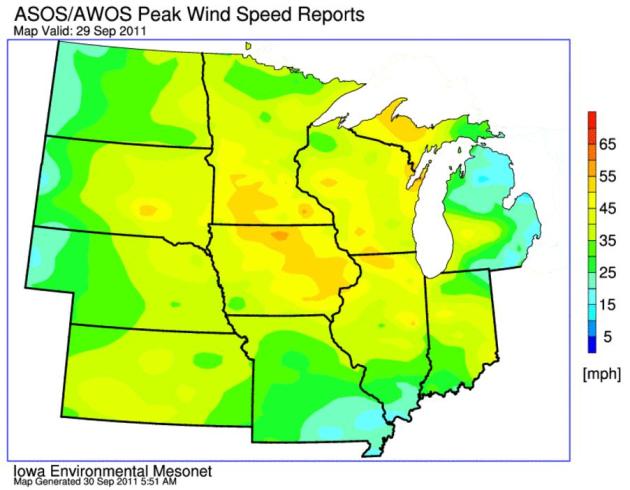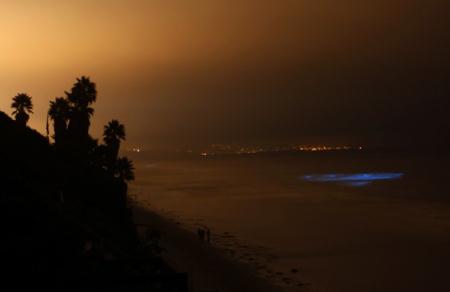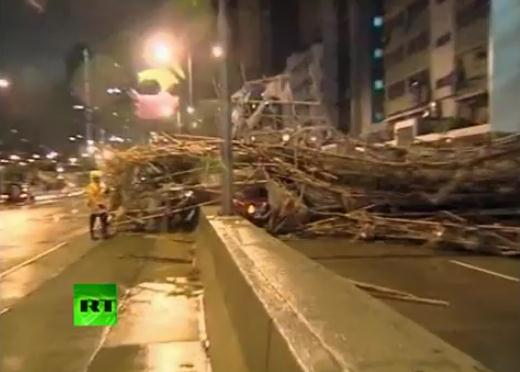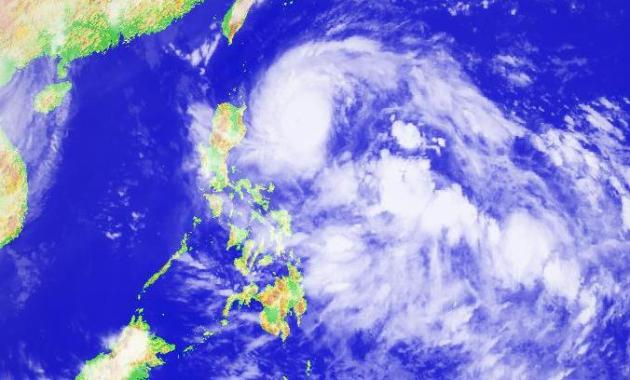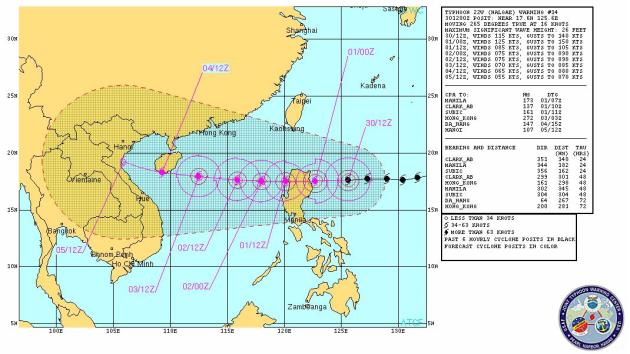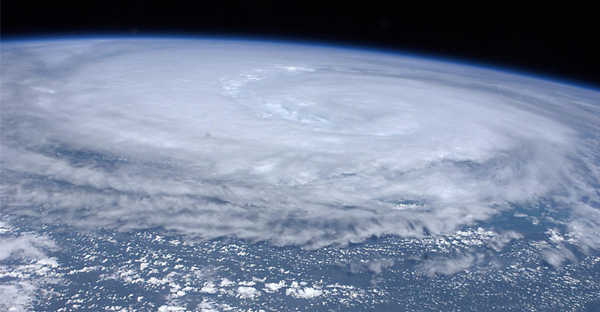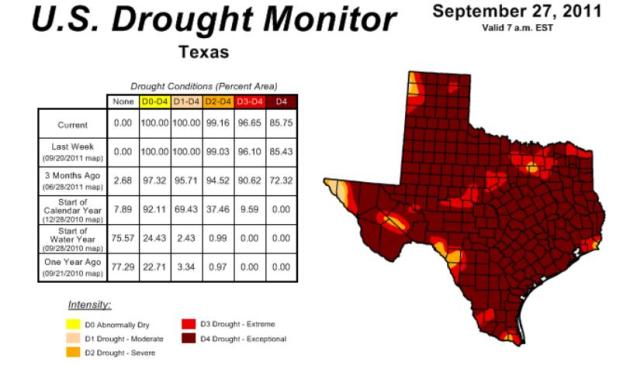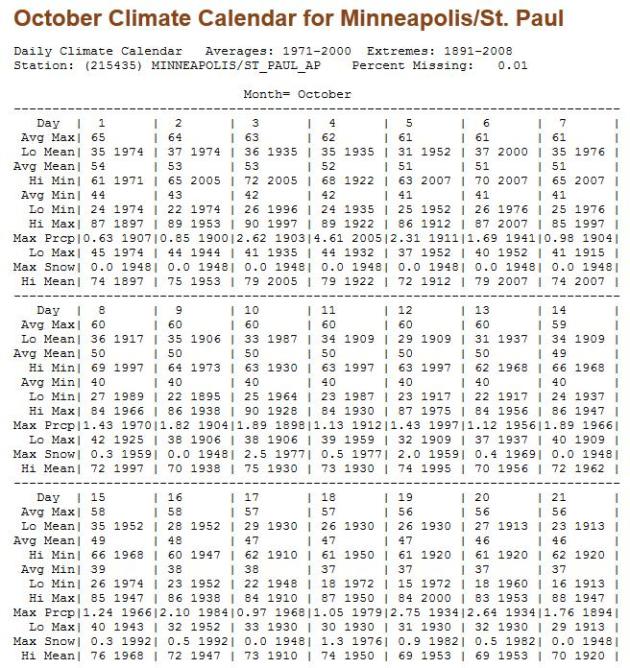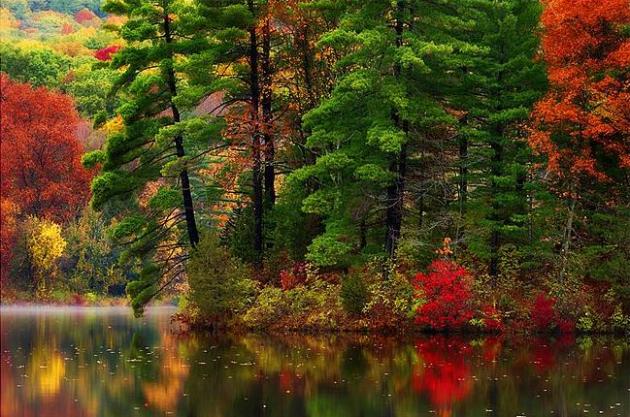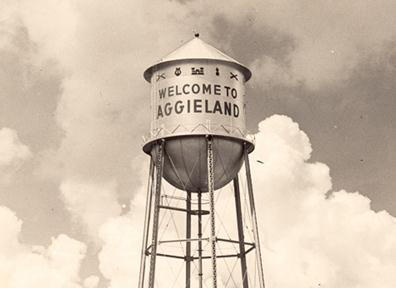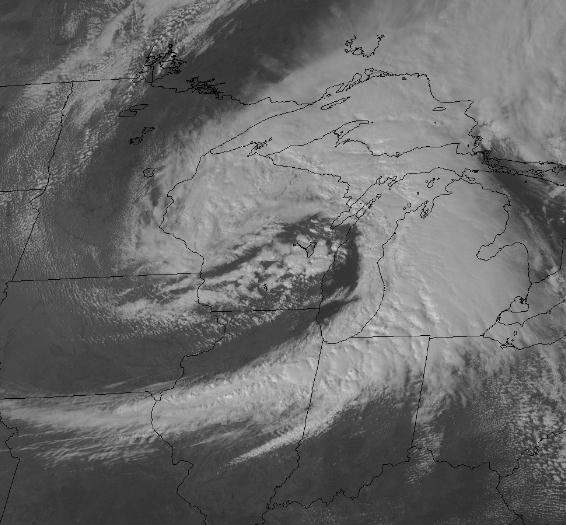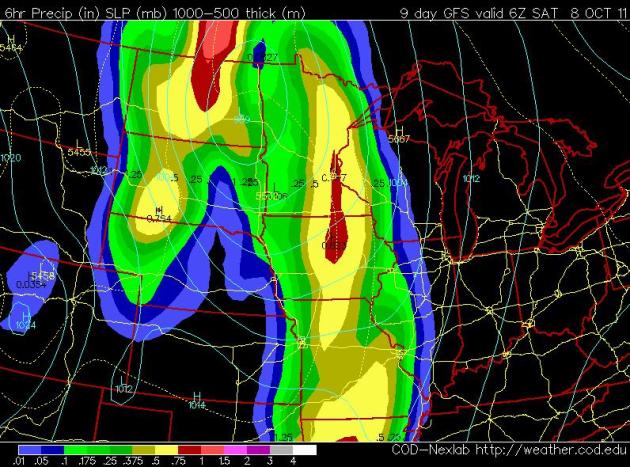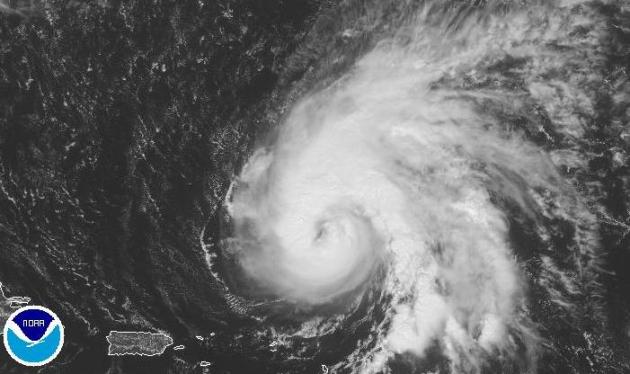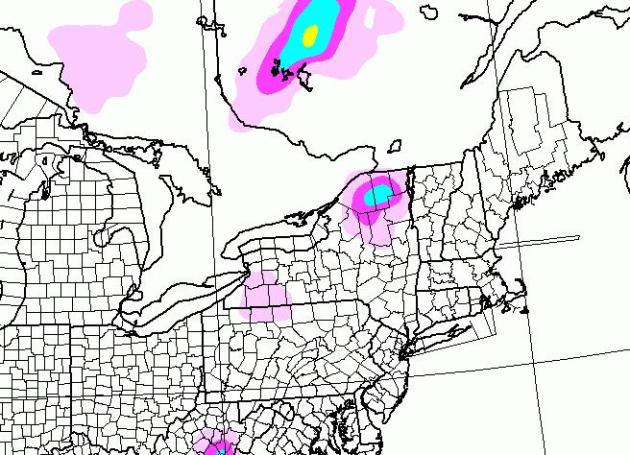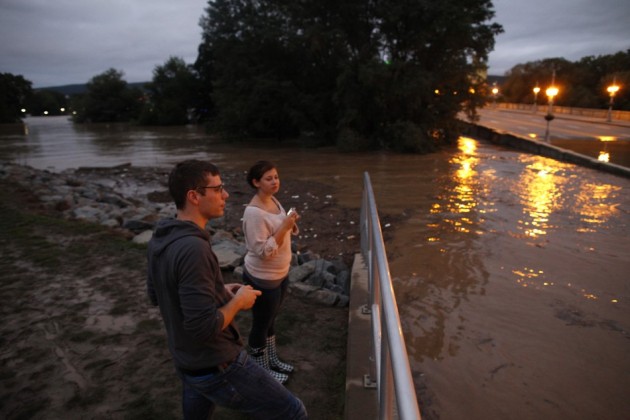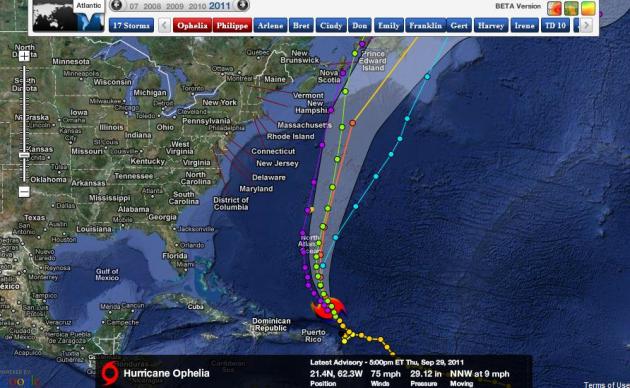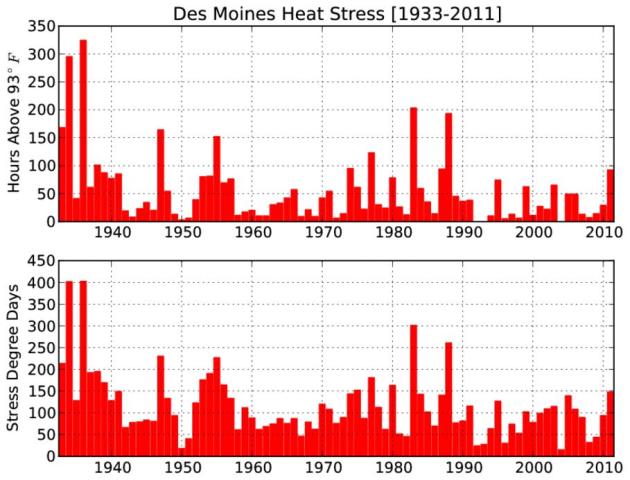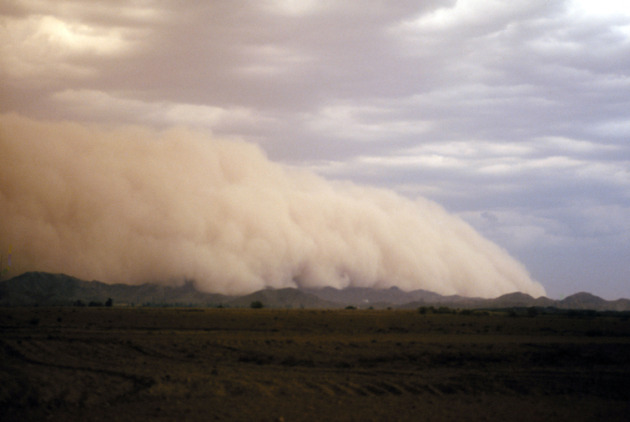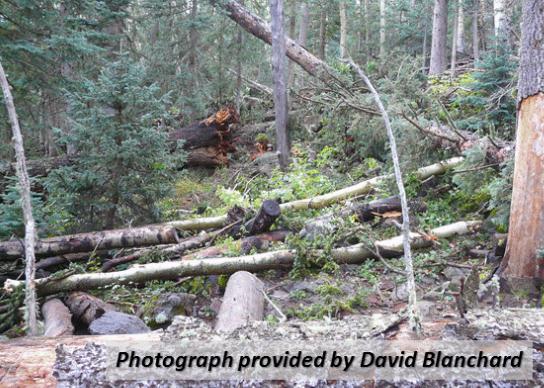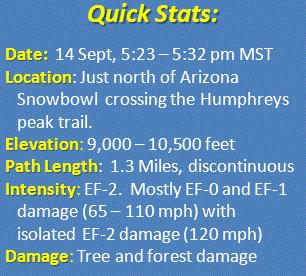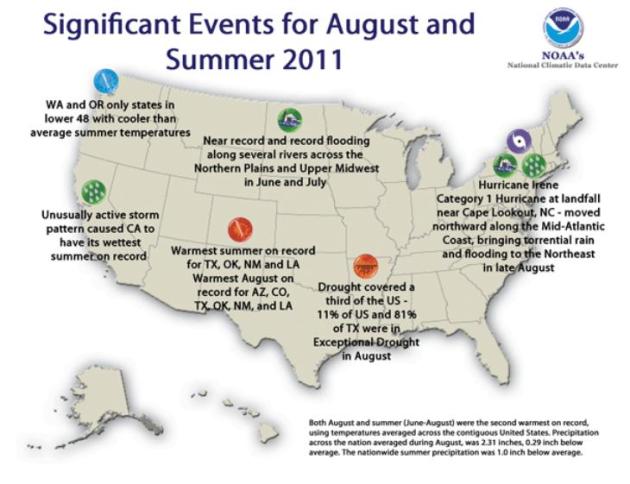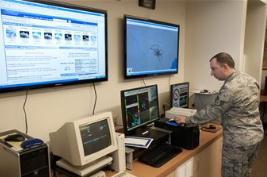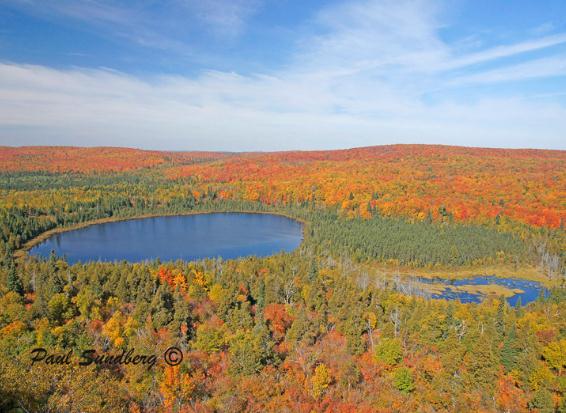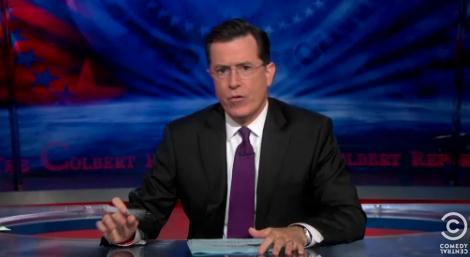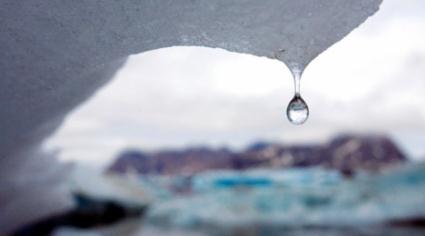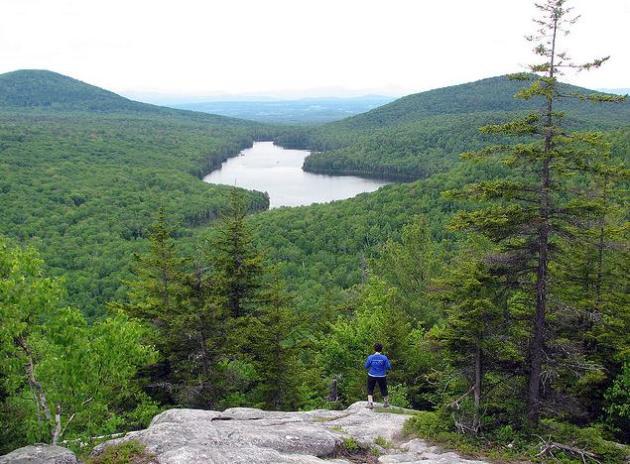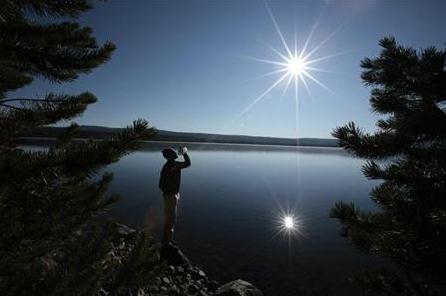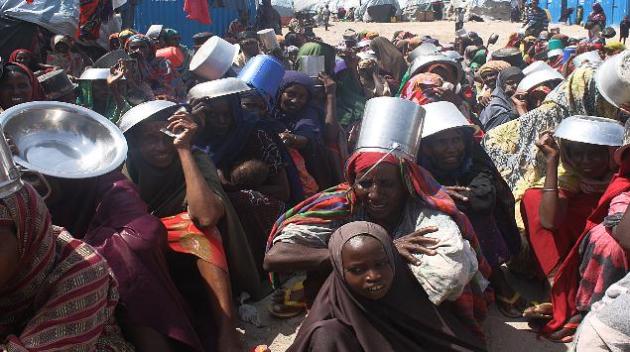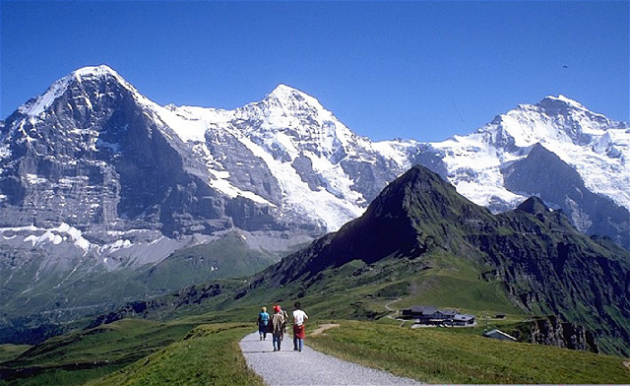80s next week in the Twin Cities, Milwaukee, Des Moines and Chicago? Weather models hinting at unusually warm weather much of next week. It may feel more like late August than early October. Global warming?
No - just random weather, proving that we live in one of the more extreme climates in the USA.
.36" rain in the Twin Cities in September (driest on record).
6/10": average snowfall in the Twin Cities in October. Sorry. I'm just the messenger. No snow in sight anytime soon (looking out 2 weeks or so).
Perfect Marathon Weather. The Medtronic Twin Cities Marathon kicks off Sunday morning at 8 am, and the weather is going to be absolutely perfect. Plan on a 7 am temperature of 48-50. By 9 am the mercury reaches 58, by 11 am I expect 62 degrees. Winds will be light, from the south/southeast, around 10 mph. Expect low humidity under a sunny sky. By mid afternoon I expect some low to mid 70s in the metro, but most runners will experience temperatures in the 50s and 60s for most of the marathon. More details
here - good luck to everyone running (and watching!) My wife runs marathons - training for the Marine Corp Marathon right now (but Twin Cities was one of her favorites). Me? I run when chased.
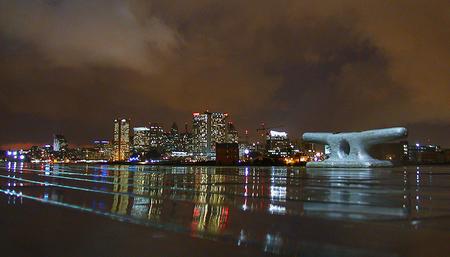
...WETTEST SEPTEMBER ON RECORD AT BALTIMORE MD...
A RECORD MONTHLY RAINFALL OF 13.32 INCHES WAS SET FOR SEPTEMBER AT
BALTIMORE IN 2011. THIS BREAKS THE OLD SEPTEMBER RECORD OF 12.41 SET
IN 1934.
THE TWO-MONTH PERIOD OF AUGUST TO SEPTEMBER 2011 WAS THE WETTEST
TWO-MONTH PERIOD ON RECORD FOR BALTIMORE. THE 23.70 INCHES OF
RAINFALL DURING THIS TIME SURPASSED THE PREVIOUS WETTEST TWO-MONTH
PERIOD OF 19.04 INCHES IN AUGUST AND SEPTEMBER 1934.
*
Baltimore photo credit
here.
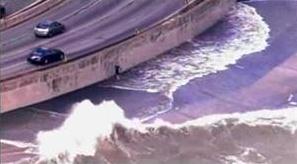 Wild And Windy
Wild And Windy. Winds gusted to 60 mph in the Chicagoland area late Thursday into Friday morning as a poweful Alberta Clipper raced across the Great Lakes, a strong contrast in atmospheric pressure whipping up violent winds. Here's a post from WGN TV's Tom Skilling on Facebook: “
Amazing scenes along Lake Michigan this morning! There were towering waves driven by gale force winds. The NOAA buoy, 50 miles ESE of Milwaukee, recorded 23 ft. waves! The NOAA lake level sensor at Cal Harbor reported a 2.5 ft water level rise this AM in the storm surge. The rise put beaches half under water! Peak Chi gusts: 46 ORD, 45 MDW. Area gusts late Thu reached 60 mph Pecatonica & Peotone, 58 mph RFD. Monroe WI reported a 68 mph gust. Winds this AM on MI side of lake hit 68 mph a mile near South Haven & 61 mph at Sable Point. Many call the waves the biggest they’ve seen.” (photo above courtesy of
KSDK).
Wind reports:
http://www.crh.noaa.gov/news/display_cmsstory.php?wfo=lot&storyid=73521&source=0
Best Weekend For Fall Color Peepers? This is it - I have a (very) strong hunch that if you wait until next weekend you may be disappointed, colors past peak over much of central and northern Minnesota. Today and tomorrow should be ideal for fall-color-gawking with blue sky, light winds, and colors close to peak color from the northern/western suburbs of the Twin Cities to St. Cloud, Little Falls and the Brainerd Lakes area to the North Shore of Lake Superior. More details from the Minnesota DNR
here.
Driest September On Record For MSP. Continuing a trend started in August - September was much drier than average across much of western and southern Minnesota. Here is an excerpt from Mark Seeley's
WeatherTalk post: "
September was a drier than normal month across nearly all of the state, especially western and southern counties. Many observers reported less than 1 inch of rainfall. One of the few observers reporting above normal rainfall was Grand Meadow in southeastern Minnesota where they had 4.27 inches. For many September, 2011 was one of the driest in history with less than half an inch of rainfall, and measurable rain on only 4-5 days during the month. Some of these included:
0.36" at MSP Airport (driest ever)
0.25" at Marshall (2nd driest)
0.05" at Lamberton (driest ever)
0.23" at Pipestone (2nd driest)
0.39" at Chaska (3rd driest)
0.41" at Wheaton (5th driest)
0.21" at Madison (driest ever)
0.34" at Browns Valley (3rd driest)
0.36" at Milan (4th driest)
0.39" at Gull Lake (5th driest)"
* Photo of Red Wing taken on Friday courtesy of Bernie White.
Frosty Start. Under a crystal clear sky with light winds temperatures dropped below 32 - frost advisories are in effect just north/east of the Twin Cities. Frost is likely outside the 494/694 freeway system early today, but by mid afternoon temperatures should be in the mid 60s.
Frost Advisory. On average the first sub-freezing night in the Twin Cities comes around October 3, according to data from the National Weather Service and Minnesota Climatology Office. Of course outlying suburbs can see frost 1-2 weeks earlier, the "urban heat island" means a 1-3 week longer growing season for the downtowns and immediate, close-in suburbs of Minneapolis and St. Paul. If you missed out on a frost this morning, chances are you'll remain frost free through the end of next week.
Average Date Of First Frost. Most years the first frost of the season arrives in the Twin Cities (downtown and close-in suburbs) during the first week of October.
Growing Drought. I was surprised to see the latest
Drought Monitor from NOAA: 19.26% of Minnesota in a moderate drought, a little less than 5% of the state (Arrowhead) in a severe drought. After a very wet June and July rainfall went off a cliff starting in August - the dry trend accelerating into September (driest on record for MSP).
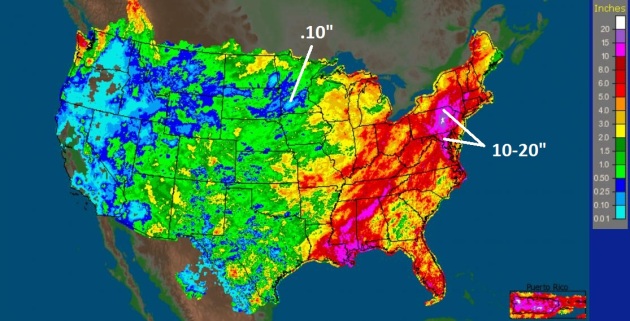 30 Day Rainfall
30 Day Rainfall. September has been a month of all or nothing. Parts of southwestern Minnesota picked up less than a tenth of an inch of rain, while central Pennsylvania has been inundated under 20" of rain - 6 to 7 month's worth of rain. Irene and Lee were the major culprits, but last week's stalled "cut-off" low over the Great Lakes kept a steady stream of tropical moisture flowing northward, fueling more torrential rains. Click
here to see rainfall data from NOAA.
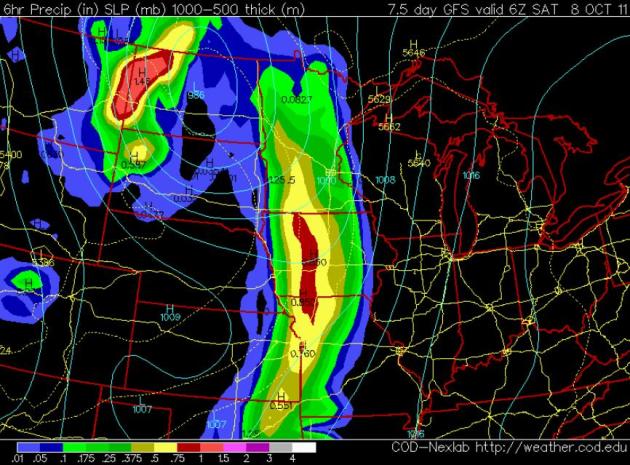 Dry Spell.
Dry Spell. The next chance of rain for most of the Upper Midwest won't come until the end of next week, probably late Friday and Friday night. It's early, but the GFS model clears skies on Saturday, highs probably holding in the 60s. Again, no numbing fronts in sight - yet.
BWCA Fire Impacting Moose Hunting. The Minnesota DNR is offering hunters refunds on their licenses or have the license reinstated for future hunts if the Pagami creek fire has impacted their hunting zones. Here's the latest from the
Minnesota DNR: "
Participants in this fall's bulls-only moose hunt can chose to have their licenses refunded and reinstated for a future hunt if the Pagami Creek fire in the Boundary Waters Canoe Area Wilderness (BWCAW) has impacted or limited access to the zone in which they are authorized to hunt."
* Pagami Creek Blaze is now 67% contained. More details
here.
Blustery Thursday Recap. The
Iowa Environmental Mesonet has more details: "
Wind gusts on Thursday turned out to be as advertised with peak gusts in Iowa above 50 mph over a good portion of the state. Unfortunately, this helped to fan some grass and field fires. Winds will not be as strong today with another stretch of dry weather expected to start. Dry weather is good in October to help farmers get the crops out."
Red Tide Glows Blue Along San Diego Coast. This is a bit bizarre, strangely beautiful, but potentially bad news for sea life impacted by the red tide. Click here to read more from the
Washington Post: "
Red tide comes from an algae bloom in the bay. At night, when the algae are disturbed, by either swimmers or waves, they give off a blue light. It may be pretty, but the algae that causes this phenomena is also closely related to algae that cause shellfish harm, and in a rare case, got so thick along a French beach, that a man riding his horse was knocked out from the fumes. "
Photo credit: "
Bioluminescent phytoplankton create their own light during a red tide in the rolling surf along the coast of Leucadia, Calif. (MIKE BLAKE - REUTERS) "
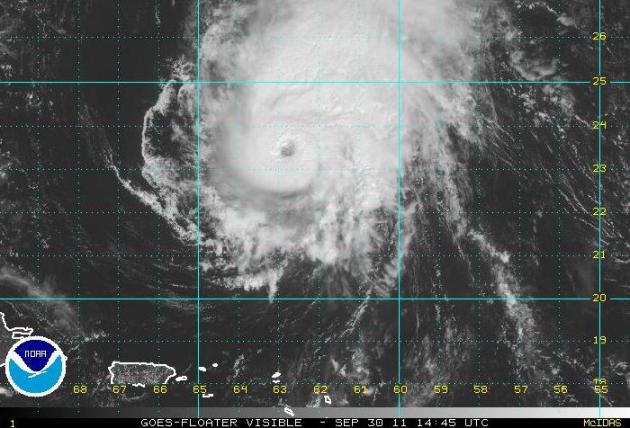 Mighty Ophelia.
Mighty Ophelia. As of midday Friday Hurricane Ophelia had become the 3rd "major" category 3 or stronger hurricane of the 2011 season, with sustained winds of 125 mph. Only 2005 has seen more named storms than 2011. Satellite image courtesy of NOAA.
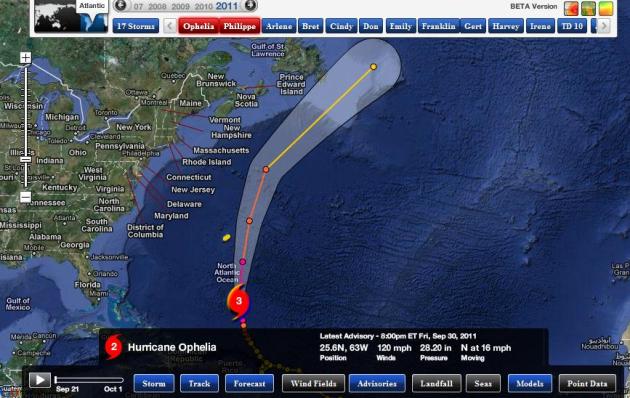 Near-Miss For Bermuda
Near-Miss For Bermuda. It appears that Hurricane Ophelia's 120-130 mph winds will track just east of Bermuda, probably missing the Canadian Maritimes early next week. Map courtesy of NHC and Ham Weather.
Typhoon Hits Hong Kong. Here is YouTube footage and details from
CCTV: "
Stock market suspended trading and shops and businesses were shuttered in Hong Kong as devastating Typhoon Nesat was approaching. The disaster made its way across the South China Sea from the Philippines where it killed 35 people and left another 45 missing. Residents of Hong Kong hunkered down on Thursday as they rode out a powerful typhoon. A barge also ripped free from its moorings and slammed into a seawall on Hong Kong Island, forcing nearby apartments to be evacuated, news reports said. Nesat brought death and destruction when it tore through the Philippines earlier this week triggering some of the worst flooding in downtown Manila in decades, before blowing out toward southern China with winds of 75 mph."
Typhoon Nalgae Threatens Philippines. Still recovering from Typhoon Nesat, a new typhoon (same thing as a hurricane) is approaching the Philippines. Typhoon Nalgae is forecast to take the same path as Nesat, aiming at the northern Philippines. It has sustained winds at 115kt (130 MPH), with gusts to 145kt (167 MPH). Within the next 12 hours it is forecast to strengthen, with sustained winds of 125kt (143 MPH) and gusts up to 150kt (172 MPH). The winds in 12 hours will make Nalgae a high category 4 hurricane in the Saffir- Simpson scale.
Projected Track. Forecast information courtesy of the
U.S. Navy.
In Irene's Wake, High And Dry Enough? Many New York City residents had an "oh-crap" moment when Hurricane Irene was approaching - no idea if they were in an evacuation zone or how many feet above sea level they were living. The
New York Times has more: "
WHEN Hurricane Irene roared up the East Coast this summer and drew a bead on Manhattan, hundreds of thousands of New Yorkers were surprised to learn they had something in common: They were living in Evacuation Zone A and potentially at imminent risk of being flooded out of their homes. Mayor Michael R. Bloomberg declared a state of emergency, shut down mass transit and urged some 300,000 people to flee to higher ground. But aside from some soggy streets, frayed nerves and a miserable Monday commute, New York City was spared the worst of the storm. It did, however, put a spotlight on the city’s waterfront, where in recent years, hundreds of millions of dollars of public money has been spent to improve parks, build esplanades and create the infrastructure necessary for residential development. The construction of pricey rental and condo towers along the shoreline, in neighborhoods like Battery Park City, Long Island City and Williamsburg, has transformed warehouse and wharf districts. New buildings and planned projects will add thousands of apartments over the next decade, helping ease a projected housing crunch as the city’s population balloons past nine million people." (image above courtesy of NASA).
Texas Drought Could Last 9 Years. Here's a post from Dr. Jeff Masters at
Weather Underground: "The devastating Texas drought that has already cost over $5 billion could continue for nine more years, predicted Texas State Climatologist John Nielson-Gammon in an interview with
Reuters yesterday. "It is possible that we could be looking at another of these multi-year droughts like we saw in the 1950s, and like the tree rings have shown that the state has experienced over the last several centuries," Nielson-Gammon said. Drought statistics released yesterday by the
U.S. Drought Monitor showed that over 96% of Texas is experiencing the two worst categories of drought, extreme and exceptional. The past 12 months have been the driest one-year period on record in Texas. The main blame for this year's drought can be put on La Niña, the cooling of equatorial Pacific waters that deflects the jet stream and takes rain-bearing low pressure system away from Texas."
* Click here to see the latest
Drought Monitor snapshot for Texas, courtesy of NOAA.
Climate Calendar. By the end of October the average high in the Twin Cities is 50. Odds are we'll see the first flurries of the winter season by the third or fourth week of October - accumulating snow is rare, but can't be ruled out. The trend in recent years has been for milder, drier Octobers with frequent 60s, even 70s from time to time. Click
here to see all the October details, courtesy of the Minnesota State Climate Office.
Climate Stories...
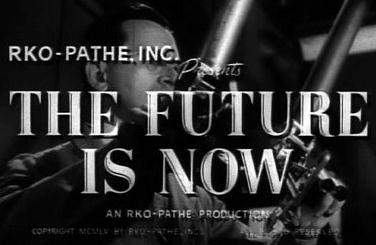
World's Engineers: Technology We Need To Address Climate Change Already Exists! We have the technology to reduce carbon emissions even as we ramp up with traditional carbon-based fuels and renewables. But sadly we don't seem to have the political will to take the next step.
Clean Technica and Joe Romm over at Climate Progress have the (encouraging) story: "
The technology needed to cut the world’s greenhouse gas emissions by 85% by 2050 already exists, according to a joint statement by eleven of the world’s largest engineering organisations. The statement says that generating electricity from wind, waves and the sun, growing biofuels sustainably, zero emissions transport, low carbon buildings and energy efficiency technologies have all been demonstrated. However they are not being developed for wide-scale use fast enough and there is a desperate need for financial and legislative support from governments around the world if they are to fulfil their potential. That’s the news release from the UK’s Institution of Mechanical Engineers (IME), one of the 11 signatory groups. The groups explicitly call for a peak in global emissions in 2020 and an intensive effort to train workers for green technology jobs."

Why Does The Global Warming Debate Provoke So Much Anger? Good question - I've wondered the same thing. It seems like climate change threatens the way some people look at the world.
NPR.org has the story: "
My topic today is not global warming. My topic, rather, is our attitudes, thoughts and feelings about global warming. It is a striking fact that many people get very worked up over this topic. People get hot under the collar. Why is this? Ursula Goodenough took up this issue here at 13.7 a few months ago. She asked: What motivates climate change deniers? Robert Krulwich, just this past week over on his blog, wonders: Why does the climate change topic make people angry? This is a tractable metacognitive question. I'd like to venture an answer to it. Let me first begin with some preliminaries. First, the question — Why do people have such strong feelings on this topic? — is an empirical question. My proposal is merely speculative. I may be wrong. Second, the question is not merely empirical. Suppose I am locked in conflict with my significant other. I might pose the empirical question: What best explains why she is so angry with me? I might speculate as to possible causes; I might take up the standpoint of the empirical scientist bent on understanding the causes of her feeling state. Could it be hormonal? Did something happen to her at work today? Did she forget to take her medications?"
 Climate Change: Will Chocolate Become A Costly Luxury?
Climate Change: Will Chocolate Become A Costly Luxury? Uh oh. Don't mess with my coffee or my chocolate. Now you definitely have my attention.
Theweek.com has a story I was sorely tempted to censor (for your mental health): "
If temperatures continue to rise, a new report suggests, West Africa, source of half the world's chocolate, will be unfit to grow the coveted beans. Is the world's cocoa supply in danger? That's what a new study from the International Center for Tropical Agriculture (CIAT) suggests, singling out a familiar culprit: Global warming. The findings [see PDF] reveal that annual temperature increases will hamper the crop-production efforts in West Africa, which currently supplies half of the world's chocolate — at least if preventive measures aren't taken. Here's what you should know: How hot are we talking? The study, which consulted 19 climate-change models, indicates that a mere two degrees Celcius increase by 2050 will render areas like Ghana and the Ivory Coast too hot to grow cocoa, says The Washington Post. As cocoa trees struggle to obtain enough water, the developmental stages of cocoa pods that house "the prized cocoa bean" — source of the chocolate we know and love — would be disturbed. The effects of a shortage — including a leap in the price of chocolate — could be felt as soon as 2030. "
Ask An Aggie: Climate Change Is Real. Here's a story from
onearth.org: "
Deep in the heart of Texas, the scientific consensus is alive and kicking -- no matter what the local politicians say. For the tens of millions of Americans who are determined to "take their country back" (from what or whom exactly is still a mystery to me), there’s no climate debate. The jury is in. Global warming is a hoax, the product of a conspiracy so immense that it dwarfs anything Senator Joe McCarthy dreamed up when he was sniffing out Chinese communists in the State Department. The command posts of this conspiracy are well known by now: the leftist radicals at the United Nations; the University of East "Climategate" Anglia; and pointy-headed, elitist institutions like Princeton and Yale, Stanford and Berkeley. By contrast to these bicoastal cosmopolitans, we’ve been hearing a lot recently about the homespun heartland virtues of schools like Texas A&M, where we’re told that a talent for yelling loudly at football games is just as important as good grades -- and is held to be no impediment to the pursuit of high office. But hold on; there’s a problem with this scenario. It turns out that Texas A&M is in fact one of the nerve centers of the great climate conspiracy, together with other football-mad southern and Midwestern schools like the universities of Alabama, Nebraska, and Oklahoma, all of which are doing groundbreaking research on global warming."
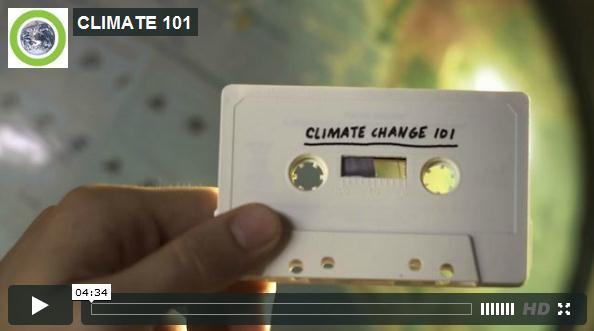 Climate Skeptic Proves That He Knows How To Waste Time, Money. Media Matters
Climate Skeptic Proves That He Knows How To Waste Time, Money. Media Matters has the story of Anthony Watts, one of the most vocal and shrill climate skeptics: "
Their newest descent into failure comes courtesy of one Anthony Watts, who claims to have proven conclusively that Al Gore "doctored a video that's supposed to prove his global warming theories." Here is the video, from Current TV, in which Bill Nye walks us through a simple experiment demonstrating the warming effects of carbon dioxide."



